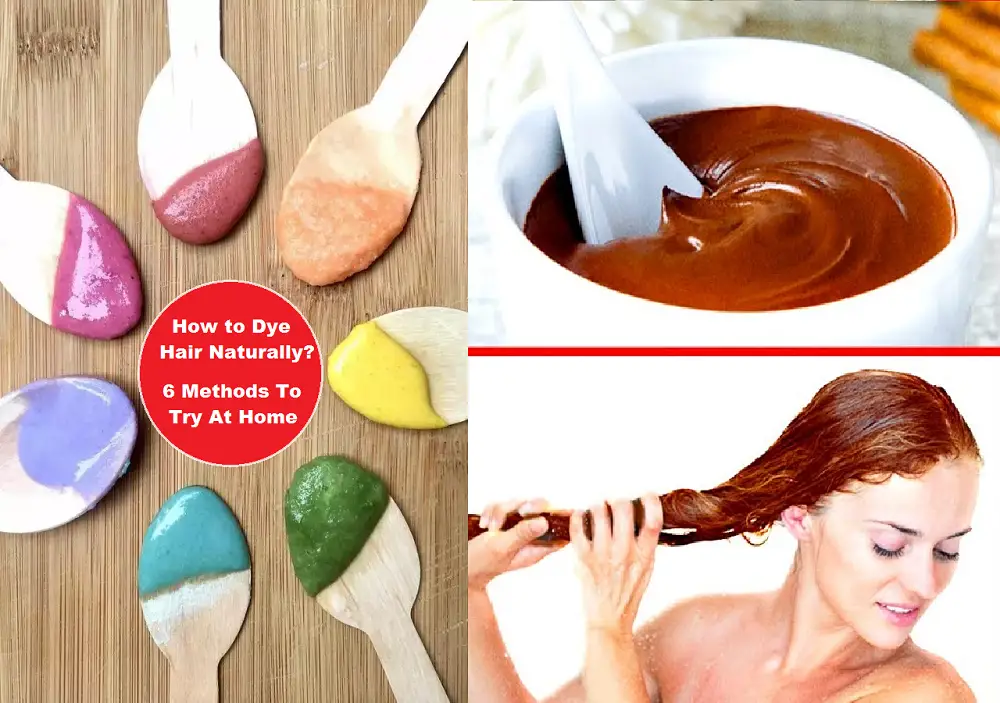Table of Contents
In a world inundated with chemical-laden hair products, more and more people are turning to natural alternatives to achieve stunning hair transformations. If you’re tired of exposing your precious locks to harmful ingredients and crave a more eco-friendly approach, look no further.
In this “How to Dye Hair Naturally” comprehensive guide, we’ll explore the enchanting world of natural hair dyeing and discover how you can harness the power of nature to achieve vibrant and healthy tresses. Get ready to embark on a journey that combines beauty, sustainability, and self-care.
Understanding the Benefits of Natural Hair Dyeing
The Allure of Natural Hair Dyeing
When it comes to dyeing your hair, there is something truly captivating about embracing the beauty of nature. Natural hair dyeing offers a myriad of benefits that go beyond just adding color to your tresses. By opting for natural alternatives, you not only protect your hair from the harsh chemicals found in conventional dyes but also contribute to a healthier environment.
Embracing the Beauty of Nature
Nature has provided us with an incredible palette of colors, waiting to be unlocked for our hair. From earthy browns to vibrant reds and luscious blondes, natural hair dyes offer a range of hues that can beautifully complement your unique style. By choosing natural options like henna, indigo, chamomile, and herbal infusions, you embrace the pure essence of nature and add a touch of enchantment to your mane.
Nurturing Your Hair and the Environment | How to Dye Hair Naturally
Unlike chemical dyes that strip your hair of moisture and leave it brittle, natural hair dyes work in harmony with your locks. They nourish and condition your hair, resulting in healthier and more lustrous strands. Moreover, natural dyes are biodegradable and free from harmful toxins, reducing your environmental impact and promoting a sustainable approach to beauty.
Exploring Natural Hair Dye Options
Unveiling the Secrets of Nature’s Palette
Nature has bestowed us with an array of natural ingredients that can be used to dye our hair. Let’s explore some of the most popular options and their unique properties:
Henna: Nature’s Magical Gift
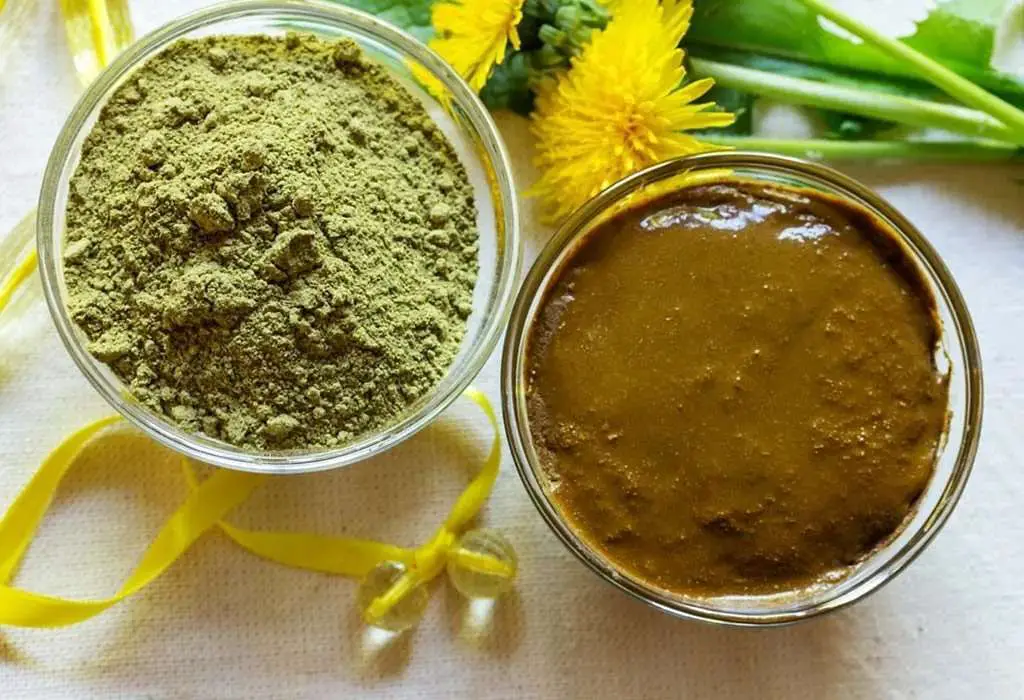
Henna, derived from the Lawsonia plant, has been used for centuries to dye hair naturally. It imparts a rich, reddish-brown color and provides excellent coverage for gray hair. Henna not only adds vibrant hues but also nourishes and strengthens your hair, leaving it glossy and full of life. It is known to provide enduring color that can last up to four to six weeks.
To dye your hair with henna, follow these steps:
- Mix approximately 1/2 cup of henna powder with 1/4 cup of water.
- Stir the mixture thoroughly until it reaches a smooth consistency similar to mashed potatoes. Add more water if needed.
- Cover the mixture with plastic wrap and allow it to sit for about 12 hours. You may need to add additional water after this period to achieve a suitable application consistency.
- Wash your hair without using conditioner.
- Apply a protective barrier, such as a headband, along your hairline, and use an oil like coconut oil to prevent henna from staining your skin.
- Divide your damp, combed hair into small sections and apply the henna paste mixture to each section until all of your hair is covered.
- Wrap your hair with plastic to allow the color to develop for at least two hours, or up to six hours, before rinsing it out.
Indigo: Adding Depth and Richness
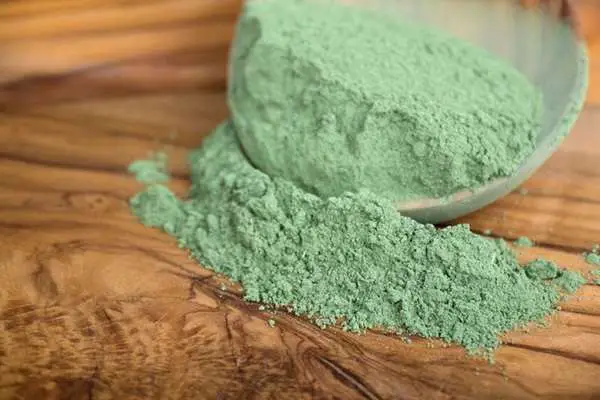
Indigo, obtained from the leaves of the Indigofera plant, is commonly used in combination with henna to achieve shades ranging from deep browns to intense blacks. It acts as a natural dye fixative and adds depth and richness to your hair, giving it a captivating allure.
By priming your hair with henna before using indigo, you can achieve darker shades such as brown or black. The henna treatment acts as a base, allowing the indigo to provide the desired color result.
Step 1 – Henna Treatment:
- In a bowl, combine henna powder with black tea or black coffee concoction and let it soak overnight.
- Optionally, add yogurt or egg for extra conditioning benefits.
- Apply the henna paste onto clean hair, ensuring full coverage, and allow it to stay for 45 minutes.
- Rinse your hair thoroughly with water, without using shampoo.
Step 2 – Indigo Treatment:
- After rinsing the henna from your hair, allow it to dry completely.
- Mix indigo powder with water to create a fine paste.
- Apply the indigo paste to your hair, working one section at a time, starting from the roots and extending to the ends. Make sure to cover all the hair strands.
- Apply the remaining indigo paste all over your head.
- Wear a shower cap to prevent the dye from spilling and let it sit for 45 minutes to 2 hours, depending on the desired darkness.
- Rinse your hair thoroughly with water.
- The next day, wash your hair with a mild shampoo.
Chamomile: Illuminating Golden Hues
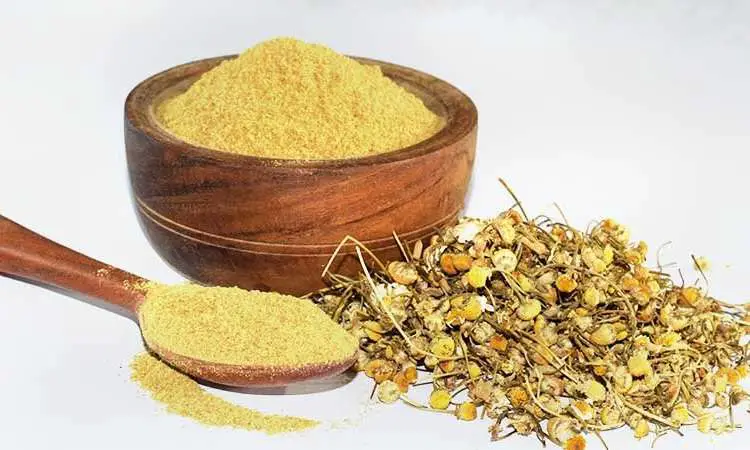
If you desire to lighten your hair and infuse it with sunny, golden tones, chamomile is your go-to option. Chamomile tea or essential oil can be used to create beautiful highlights and add a touch of warmth to your mane. It’s a natural brightener that mimics the sun-kissed glow of summer.
To lighten your hair using chamomile tea, follow these steps:
- Take 1/2 cup of chamomile flowers and steep them in boiling water.
- Allow the mixture to sit and steep for approximately 30 minutes, allowing it to cool down. Then strain out the chamomile flowers.
- After washing your hair, make sure it is damp, and then pour the brewed chamomile tea through your hair. Repeat this process at least 10 times to ensure thorough coverage.
- Wait for 16 minutes before rinsing out the chamomile tea.
For optimal results, it’s recommended to use this treatment once a week to maintain the desired bright and lightened hair color.
Coffee and Tea: Awakening Earthy Tones
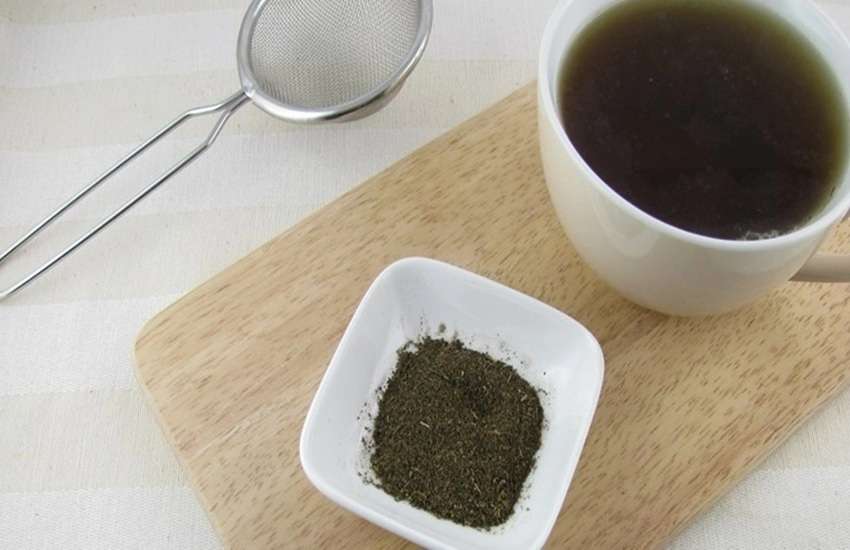
For those seeking to enhance their natural hair color or achieve rich, earthy shades, coffee and tea can work wonders. Coffee can darken your hair and add depth, while tea, such as black or herbal varieties, can infuse it with warm, reddish tones. These pantry staples offer a cost-effective and natural way to transform your hair.
You May Also Read : Brew Up a New Look: How to Dye Hair With Coffee
To achieve a subtle hair color change using coffee or tea, follow these steps:
- Brew a strong cup of dark-roast coffee or tea.
- In a bowl, combine approximately 1/2 cup of coffee or tea with 2 tablespoons of coffee/Tea grounds and 1 cup of leave-in hair conditioner.
- Ensure your hair is clean and damp before applying the mixture.
- Apply the coffee or tea mixture to your hair, making sure to cover it thoroughly.
- Allow the mixture to set in your hair for at least an hour.
- Rinse out the mixture when you’re finished.
- If desired, repeat the process for more noticeable results.
It’s important to note that coffee or tea won’t produce dramatic changes to your hair color, and the effects may not last long. However, it can serve as a quick and cost-effective option for a temporary boost in color.
Beetroot and Carrot: Vibrant Natural Reds
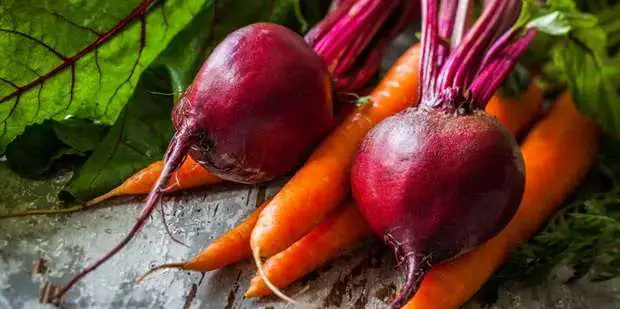
If you’re looking for vibrant red hues, look no further than beetroot and carrot. These colorful vegetables can be used to create natural dyes that add striking red tones to your hair. Whether you desire a subtle tint or a bold statement, beetroot and carrot are excellent choices for achieving stunning red shades.
If you desire to add a reddish-orange hue to your hair, consider giving carrot juice a try. The duration of the tint may vary depending on your hair color, typically lasting for a few weeks.
To utilize carrot juice for hair dyeing purposes, follow these steps:
- Combine carrot juice with a carrier oil such as coconut or olive oil.
- Apply the mixture generously throughout your hair.
- Wrap your hair in plastic and allow the mixture to set for at least an hour.
- Rinse your hair using apple cider vinegar. If the desired color intensity is not achieved, you can repeat the process the following day.
For a richer red tint with cooler undertones, consider using beet juice as a natural hair dye instead of carrot juice.
Here are the steps to dye your hair with beet juice:
- Mix beet juice with a carrier oil of your choice.
- Apply the mixture generously to your hair and ensure it is evenly distributed. Then, wrap your hair.
- Allow the mixture to set for at least an hour before washing it out.
Herbal Infusions: Customizing Your Color
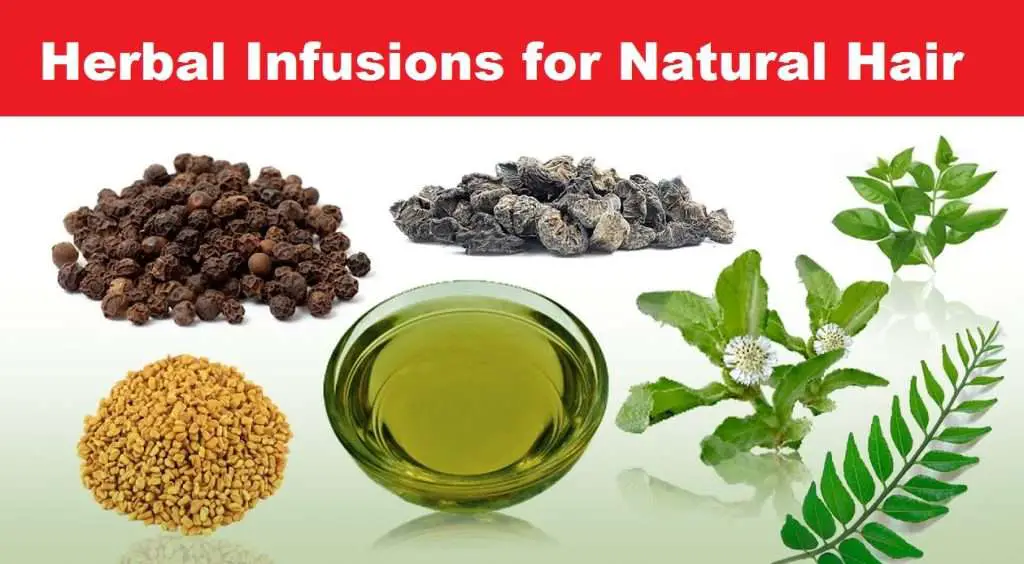
Herbal infusions, made from a variety of plants and flowers, offer a customizable approach to natural hair dyeing. From rosemary and sage for darkening gray hair to calendula and lavender for subtle highlights, the possibilities are endless. Experimenting with different herbal combinations allows you to create a personalized color palette that reflects your individual style.
Dyeing Hair with Herbal Infusions – Step-by-Step Guide:
Step 1: Gather the Ingredients and Tools
- Choose the herbs suitable for your desired hair color. For example, chamomile for blonde, hibiscus for red, or sage for darkening gray hair.
- You will need a large pot, water, a strainer or cheesecloth, a bowl or container to collect the herbal infusion, and a spray bottle (optional).
Step 2: Prepare the Herbal Infusion
- Fill the pot with water, depending on the length and thickness of your hair. Usually, 2-4 cups of water are sufficient.
- Add a generous amount of your chosen herb(s) to the water. Use approximately 1/2 to 1 cup of dried herbs or 1-2 cups of fresh herbs.
- Bring the water to a gentle simmer and let the herbs infuse for about 30 minutes to an hour, ensuring the color and properties are released.
Step 3: Strain the Herbal Infusion
- Carefully strain the herbal mixture using a strainer or cheesecloth into a bowl or container. This will separate the liquid from the herb remnants.
- Allow the infusion to cool down to a comfortable temperature.
Step 4: Prepare Your Hair
- Wash your hair with a gentle shampoo beforehand, ensuring it is clean and free from any product buildup.
- Towel-dry your hair until it is slightly damp.
Step 5: Apply the Herbal Infusion
- Place a towel around your shoulders to protect your clothing.
- Pour the herbal infusion over your hair, saturating it completely. You can use a spray bottle for even distribution if desired.
- Massage the infusion into your scalp and hair strands to ensure full coverage.
Step 6: Let the Infusion Sit
- Once your hair is fully saturated, cover it with a shower cap or wrap it with plastic wrap to retain moisture and heat.
- Allow the herbal infusion to sit on your hair for at least 1-2 hours. For more intense color, you can leave it overnight.
Step 7: Rinse and Style
- After the desired time has passed, rinse your hair thoroughly with cool to lukewarm water until the water runs clear.
- You can condition your hair afterward, using a herbal conditioner if preferred.
- Style your hair as usual, either air-drying or using heat styling tools.
Note: The color intensity may vary depending on your hair’s natural color and the herbs used. It’s recommended to perform a strand test beforehand to determine the desired outcome.
Preparing for a Natural Hair Dyeing Journey
Before You Begin: Essential Preparations
Before embarking on your natural hair dyeing journey, it’s essential to take a few preparatory steps to ensure optimal results and minimize any potential risks.
Conducting a Strand Test
Before applying any natural dye to your entire head of hair, it’s advisable to perform a strand test. This test helps you determine how the dye will interact with your hair, giving you a preview of the color and allowing you to make adjustments if needed.
Gathering the Necessary Supplies
To dye your hair naturally, you’ll need a few basic supplies. These may include gloves, mixing bowls, application brushes, a shower cap, and old towels or clothing to protect your surroundings.
Prepping Your Hair for Dyeing
To ensure optimal color absorption, it’s important to prepare your hair before applying the natural dye. This may involve washing your hair with a clarifying shampoo to remove any product buildup and allowing it to dry completely.
Common Step-by-Step Guide to Natural Hair Dyeing
Embrace Nature’s Touch: How to Dye Hair Naturally
Now that you’re prepared, let’s dive into the step-by-step process of dyeing your hair naturally. Follow these instructions to achieve stunning and vibrant results:
Mixing the Natural Hair Dye Paste
Start by preparing the natural hair dye paste according to the instructions provided with the specific dye you’ve chosen. This usually involves combining the dye powder or infusion with liquid, such as water, tea, or lemon juice, to create a smooth and consistent paste.
Applying the Dye to Your Hair
Divide your hair into sections and apply the dye paste using an application brush or your gloved hands. Make sure to cover the roots and work the dye evenly through the lengths of your hair. Take your time to ensure thorough coverage and avoid any missed spots.
Achieving the Desired Color Intensity
The longer you leave the dye in your hair, the more intense the color will be. Follow the instructions provided with your chosen natural dye to determine the recommended processing time. Consider conducting regular checks to monitor the color development and adjust the processing time accordingly.
Rinse and Reveal: Unveiling Your Natural Beauty
Once the processing time is complete, rinse your hair thoroughly with lukewarm water until the water runs clear. Avoid using shampoo immediately after dyeing, as it may strip away the color. Instead, condition your hair to seal in the dye and maintain its vibrancy.
Aftercare for Luscious and Long-Lasting Results
Nurturing Your Newly Dyed Tresses
To ensure your newly dyed hair remains vibrant and healthy, it’s crucial to provide proper aftercare. Here are some essential tips to help you maintain your beautiful natural hair color:
Gentle Cleansing and Conditioning
Opt for sulfate-free and color-safe shampoos and conditioners specifically formulated for dyed hair. These products are gentle on your locks and help preserve the color for longer periods. Additionally, deep conditioning treatments can provide extra nourishment and hydration to keep your hair soft and shiny.
Protecting Your Color from Fading
Excessive sun exposure and heat styling can cause your natural hair color to fade over time. Protect your tresses by wearing a hat or using UV-protective hair products when spending time outdoors. Limit the use of heat tools and apply a heat protectant spray before styling to minimize damage.
Incorporating Natural Hair Care Rituals
Incorporate natural hair care rituals into your routine to maintain the health and vitality of your dyed hair. This may include regular scalp massages with essential oils, using natural leave-in conditioners, and adopting a balanced diet rich in hair-friendly nutrients.
Conclusion
By delving into the realm of natural hair dyeing, you’re not only creating a stunning visual transformation but also nurturing your hair and the environment. Embrace the power of nature’s pigments and unlock a world of vibrant and healthy tresses.
Remember, the journey towards natural hair dyeing is an exploration of self-expression, self-care, and sustainability. So go ahead, seize the opportunity to embrace your natural beauty while minimizing your ecological footprint.

